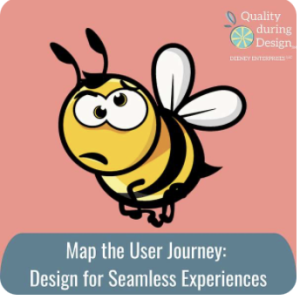
Map the User Journey: Design for Seamless Experiences

It’s important to evaluate the customer’s use process during concept development.
Rather than focusing solely on what your product does, understanding how users will interact with it creates opportunities to design more intuitive, enjoyable experiences. By mapping out the steps users take from beginning to end using process flowcharts, development teams gain clarity on inputs, outputs, and the journey between them.
Whether you need to simplify complex steps, compare competitor approaches, or identify critical-to-quality elements, these analytical methods help prioritize design decisions based on what truly matters to users.
The goal is creating products that feel intuitive and natural, preventing those awkward validation testing moments when engineers want to shout, “You’re doing it wrong!” When we evaluate the use process early, we develop products others love while minimizing costly redesigns and user frustration.
Understanding the customer’s use process is a critical but often overlooked aspect of product development, particularly during the early concept development phase.
The gap between engineering intent and user reality
As product designers and engineers, we’ve all experienced that moment of frustration when users don’t interact with our products as intended. Those viral “I was today years old when I learned this” videos showcase clever design features that many users never discovered – from the water distribution square on ice cube trays to the gas cap holder inside your car’s fuel door.
These examples highlight a fundamental disconnect between engineering intent and user reality. Even the most innovative design features become worthless if users don’t understand how to use them correctly.
This gap between design intent and user experience represents a significant opportunity for improvement in the product development process. Rather than blaming users for “doing it wrong,” successful product designers recognize that understanding the customer’s use process early in development is essential for creating intuitive, user-friendly products.
Flowcharts are also a Concept Development tool
Process flowcharts emerge as powerful tools during concept development, offering multiple benefits to cross-functional teams.
By mapping out the steps users take from input to output, these visual representations provide clarity on the beginning and end of the user journey. They help teams analyze assumptions about user behavior, expectations, and the use environment.
Most importantly, flowcharts allow developers to better understand the basic steps users will take with the product, creating opportunities to enhance the user experience at each touchpoint. This approach shifts focus from what the product does to how users interact with it – a crucial perspective for developing truly user-centered designs.
Beyond basic flowchart mapping
The value of process flowcharts extends beyond basic mapping.
Quality engineers employ various analytical methods to evaluate manufacturing processes depending on specific goals. We can use these same tools during product development to better map the user journey.
- For confusing steps, teams can create sublevel flowcharts with narrower scope.
- Comparison analysis helps evaluate competitors’ products
- Critical-to-quality analysis examines interfaces and inputs affecting the use process
- Value-added analysis identifies areas for simplification
- Deployment flowcharts with swim lanes clarify who does what throughout the process.
These analytical approaches enable teams to prioritize design decisions based on what truly matters to users and their successful interaction with the product.
Use Process in Concept Development helps with design decisions
Implementing use process evaluation early prevents painful scenarios during validation testing. Consider the story of an engineer who, after watching users struggle with his nearly finished product during testing, burst into the room shouting, “You’re doing it wrong!” This frustration stemmed from a fundamental disconnect that could have been identified much earlier through process analysis (and earlier formative studies).
By focusing on how users will interface with your product during concept development (not just how the product will work) you gain better understanding of your customers, identify what’s important to them, and develop design inputs that create products others love while minimizing development costs and redesign efforts.
This customer-centered approach to process evaluation represents a powerful quality thinking tool that can transform your product development approach and ultimately lead to more successful, intuitive products.
Other podcast episodes you may like:
Uncovering Customer Desires: Understanding Benefits in Concept Development
Design to Avoid Problems: Focusing on Symptoms Early On
Types of Design Analyses possible with User Process Flowcharts
Leave a Reply